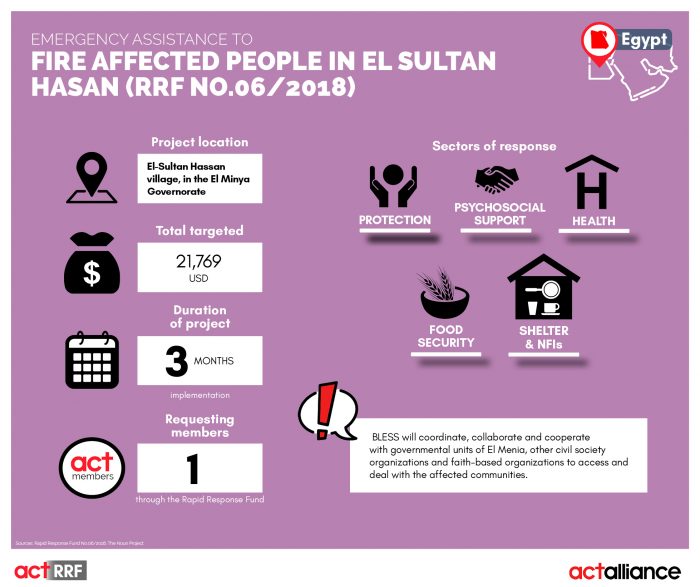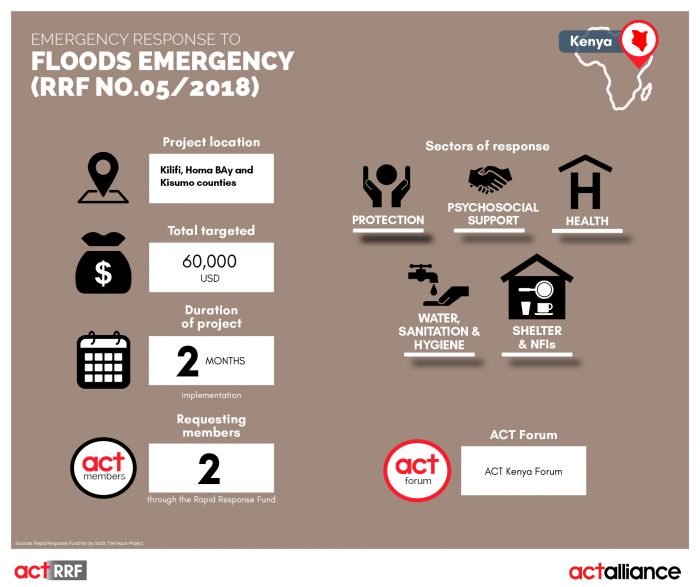During the night of Wednesday the 30th May 2018, the town of Marwa, Ruvu Mferejini and Ruvu Jiungeni in SAME District, Kilimanjaro Region, Tanzania, was severely hit by overflow of river Ruvu and Nyumba ya Mungu Dam. On this night an overflow caused displacement of households, interrupted communication, swept away termed animals and crop fields. According to the RVA done by two members of ACT Tanzania Forum (ELCT and TCRS), the overflow caused floods that displaced 450 Households that had a range of between 10 to 20 persons in each household making a total number of 5,780 homeless people.
Findings indicate that 890 acres of farmed land (tomatoes, onions, maize and beans) submerged in water, 300 houses were swept away and or covered with mud and about 135,000 kilograms of foodstuff from the registered 450 households were swept away.
Number of domestic animals and birds died was not yet established as all men and youths with their animals vacated the area leaving behind their wives and children unattended. According to the SAME District Commissioner’s report, nine primary schools and one secondary school from the ward had to be closed before the term end and therefore interrupted school calendar.
The floods have put the town in a state of crisis. The flood affected persons find themselves in a desperate situation, with many unmet vital humanitarian needs such as access to: food, safe drinking water, school and scholastic materials, housing, washrooms and other sanitary services.
The regional and District commissioners of Kilimanjaro Region, Same and Mwanga Districts through their structured response divisions are closely working with the displaced families. Through the evacuation team, the Government has shifted the affected families to safer areas and have provided land for residential construction (each family given a plot of size 15X25 meters). The Government has also provided Water guard tablets to cleanse water. A team scouts and police are helping in putting in place temporary latrines.
Norwegian Church Aid has committed TZS 22 million for purchase of water purification tablets, water storage facilities per each of the registered 450 households.
The Evangelical Lutheran Church in Tanzania (ELCT) conducted the Response Vulnerability Assessment (RVA), and has availed accommodation for women with U5 children in its nearby church premises. Tanganyika Christian Refugee Service donated 340 boxes of youth clothes, 15 bales of baby blankets and 10 bales of quits. Christian Council of Tanzania (CCT) through its WAMA offices in Dar es Salaam are sorting out how to engage /participate on the movement/activity.
ELCT and TCRS are responsible for the project implementation. The staff of ELCT and TCRS shall be very involved, as well as volunteers from affected communities.
The Evangelical Lutheran Church in Tanzania is submitting a Rapid Response Fund Proposal to support those in need.
Tanzania-Floods Emergency (RRF)











